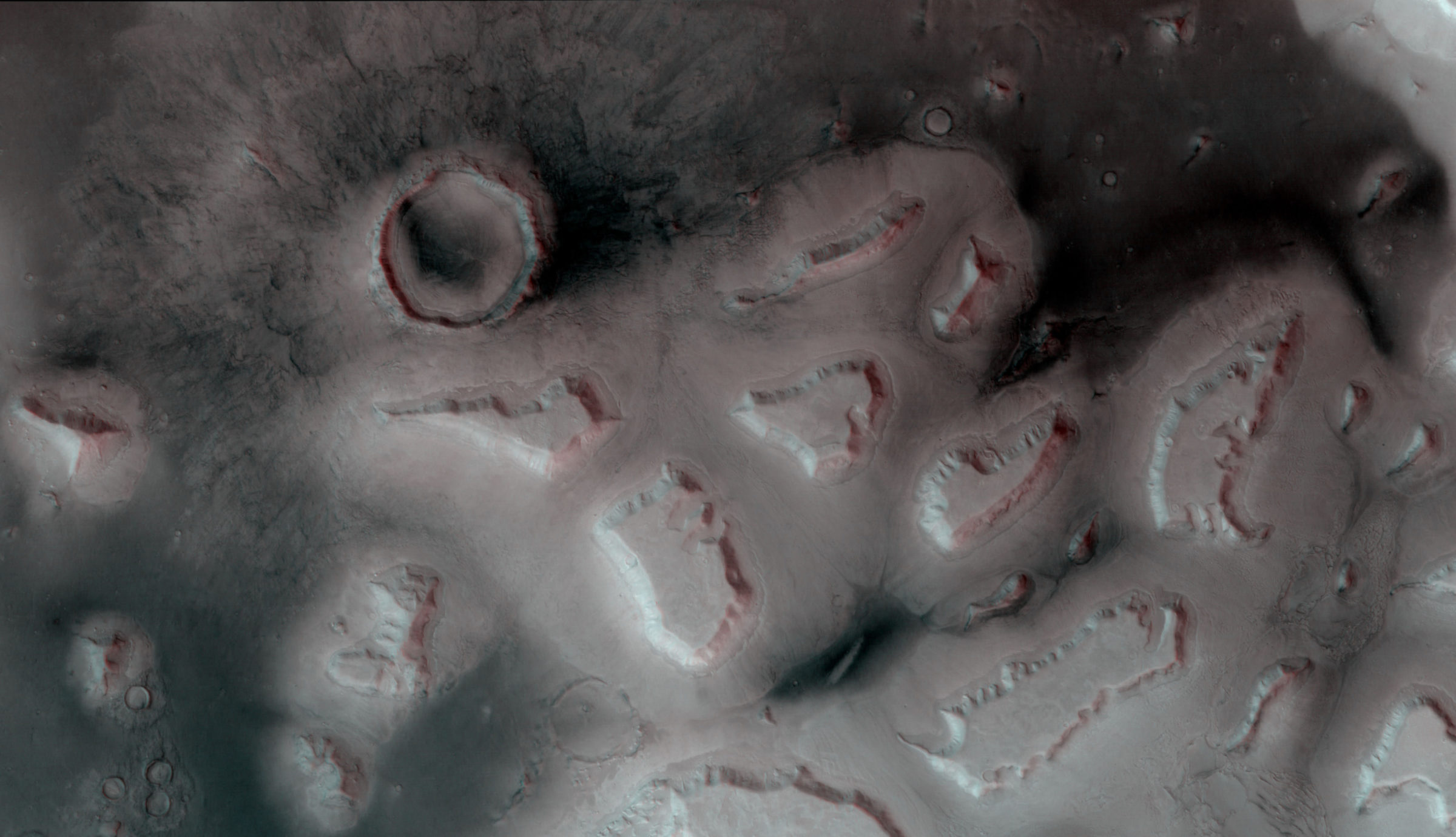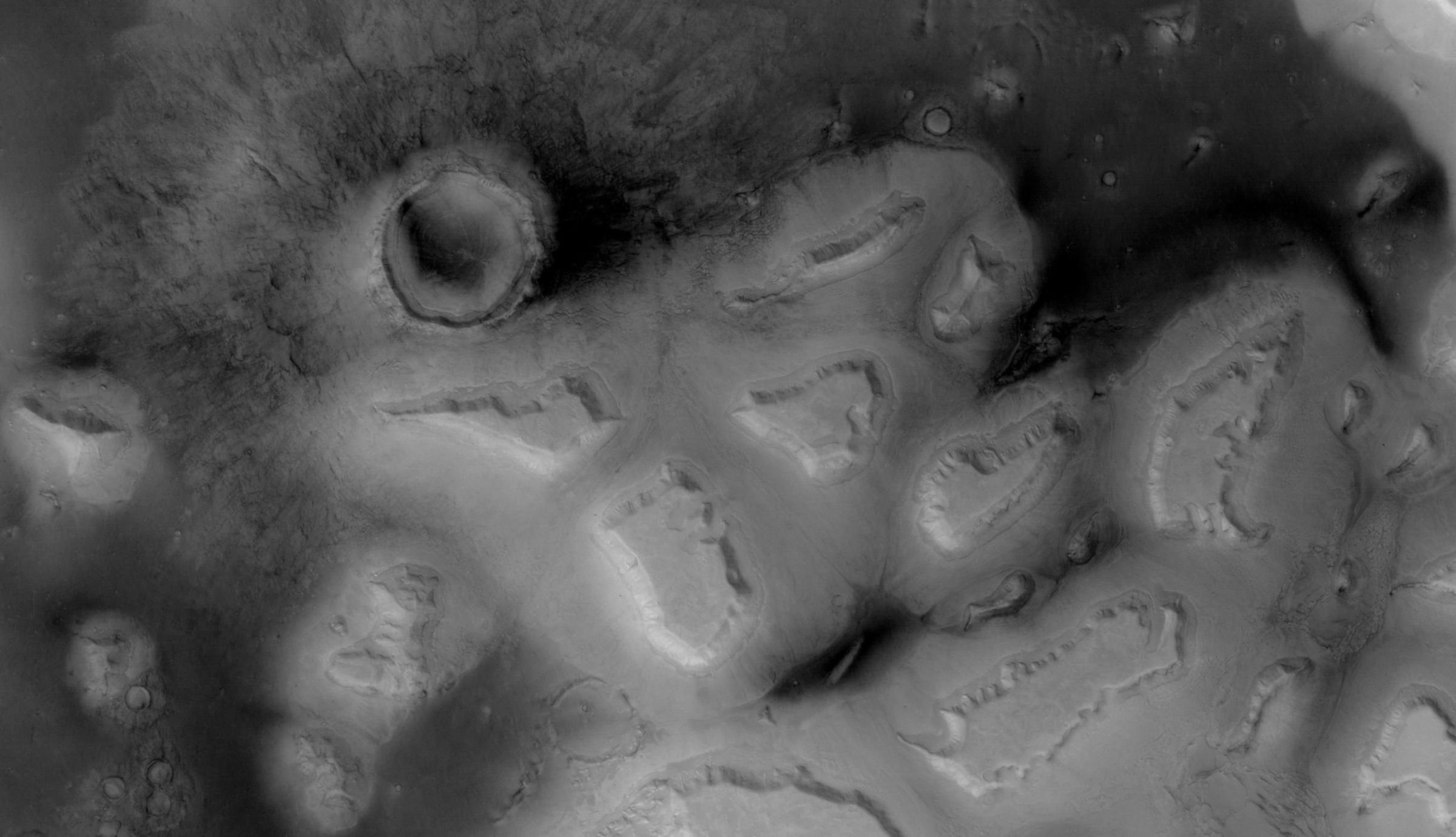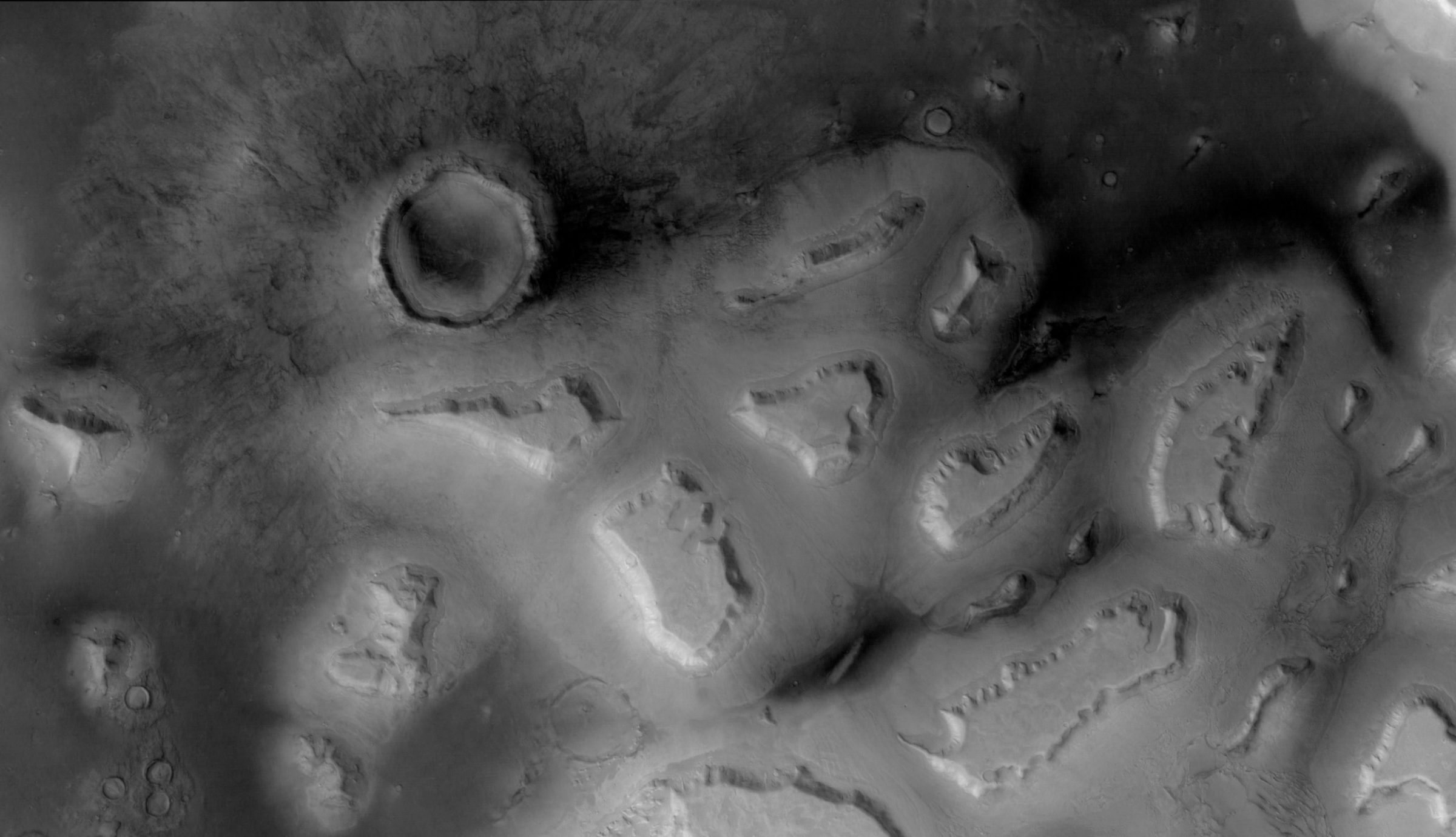Bruce Murray Space Image Library
Aproned mesas in Deuteronilus Mensae, Mars (3D)

The above is a red-blue anaglyph. Use 3D glasses (red over left eye, blue over right) to see it in 3D.
Stereo View


Flicker GIF
Part of HRSC image 1483_0000. Here is the data on the HRSCview website, and also on the ASU Mars Data website. This is the same image as in ESA's Deuteronilus Mensae release, but it shows a different cropped area. It is a wider view of the region shown in this color image.
Source data was Level 3, meaning that it has all been reprojected onto a MOLA topographic map. That has the effect of removing large-scale topography (regional slopes and the larger topographic features, including the mesas) while leaving in small-scale topography (crater rims, cliff scarps, et cetera). Differences in illumination probably result from different path lengths through the atmosphere? The left-eye (red, in the anaglyph) image is stereo channel 2, the right-eye image stereo channel 1. The image has been rotated to place north at left in order to make the stereo sensible to the human eye.


 Explore Worlds
Explore Worlds Find Life
Find Life Defend Earth
Defend Earth

